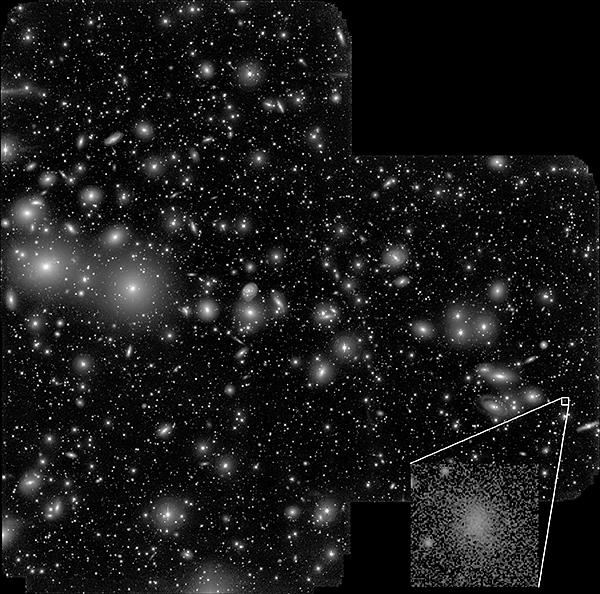ING web news release
25 August, 2017
The Puzzle of Ultra-Diffuse Galaxies
Our solar system is located in a spiral galaxy composed of billions of stars, the Milky Way. With the naked eye, we can see some 3000 stars in a dark night. However,
if Earth would reside within an ultra-diffuse galaxy, we would only spot a few dozen stars on the sky. Galaxies of this type were either not able to produce more stars
in the first place, or they got stripped of their stars by tidal forces.
Intriguingly, though, larger telescopes and improved imaging
techniques have recently led to the discovery of many ultra-diffuse galaxies
in the harshest environments possible: galaxy clusters.
"We have been asking ourselves how these fragile objects are able to survive among such dense, massive accumulations of hundreds of large and small galaxies", explains Carolin Wittmann,
PhD student at the Astronomisches Rechen-Institut (ARI) of the Zentrum für Astronomie der Universität Heidelberg (ZAH). Using very deep optical images obtained in 2012 with the Prime Focus Camera (PFIP) of the William Herschel Telescope (WHT), Ms Wittmann identified about 90 such galaxies in the core of the Perseus Cluster, 240 million light-years away.
|
 |
The central region of the Perseus galaxy cluster. This mosaic image is composed of many "tiles", individual deep exposures which were taken with the WHT. Ultra-diffuse galaxies are hard to spot,
which is illustrated in the enlarged region containing one of the newly discovered faint objects. Projected on the sky the entire image has about the diameter of the full moon. Credit: Carolin Wittmann (ZAH). Large format: JPG.
|
Astronomers wonder how
these vulnerable galaxies are able to survive among such dense, massive
accumulations of hundreds of large and small galaxies. Are they possibly
protected by a high dark matter content? Or might they be just now in the
process of tidal disruption?
"Surprisingly, most galaxies appear intact — only very few show signs of ongoing disruption," emphasizes Dr Thorsten Lisker, who initiated the project.
If this means that the ultra-diffuse galaxies can withstand the strong tidal field of the Perseus Cluster, then they must contain a large amount of unseen mass—dark matter—whose gravitational attraction acts as a binding force.
|
 |
A gallery of several ultra-diffuse galaxies discovered in the Perseus galaxy cluster. These objects are barely visible against the background. Diffuse bright spots are foreground stars in the Milky Way. Credit: Carolin Wittmann (ZAH). Large format: JPG.
|
Tidal forces may, however, be
the reason why galaxies with the largest sizes are not found in the Perseus
cluster core, while being present in the outer regions of other galaxy
clusters.
Along with international partners, the researchers are now hoping to obtain data of similar quality on the outskirts of the Perseus Cluster, where the environmental influence would have been less strong, preserving more of the original structure of the galaxies.
More information:
C. Wittmann, T. Lisker, L. Ambachew Tilahun, E.K. Grebel, C. J. Conselice, S. Penny, J. Janz, J. S. Gallagher III, R. Kotulla, J. McCormac, 2017, "A population of
faint low surface brightness galaxies in the Perseus cluster core", MNRAS, 470, 1512 [ ADS ].
"A Trace of Galaxies at the Heart of a Gigantic Galaxy Cluster", ZAH press release 115/2015, 21 August 2017.
|
|



